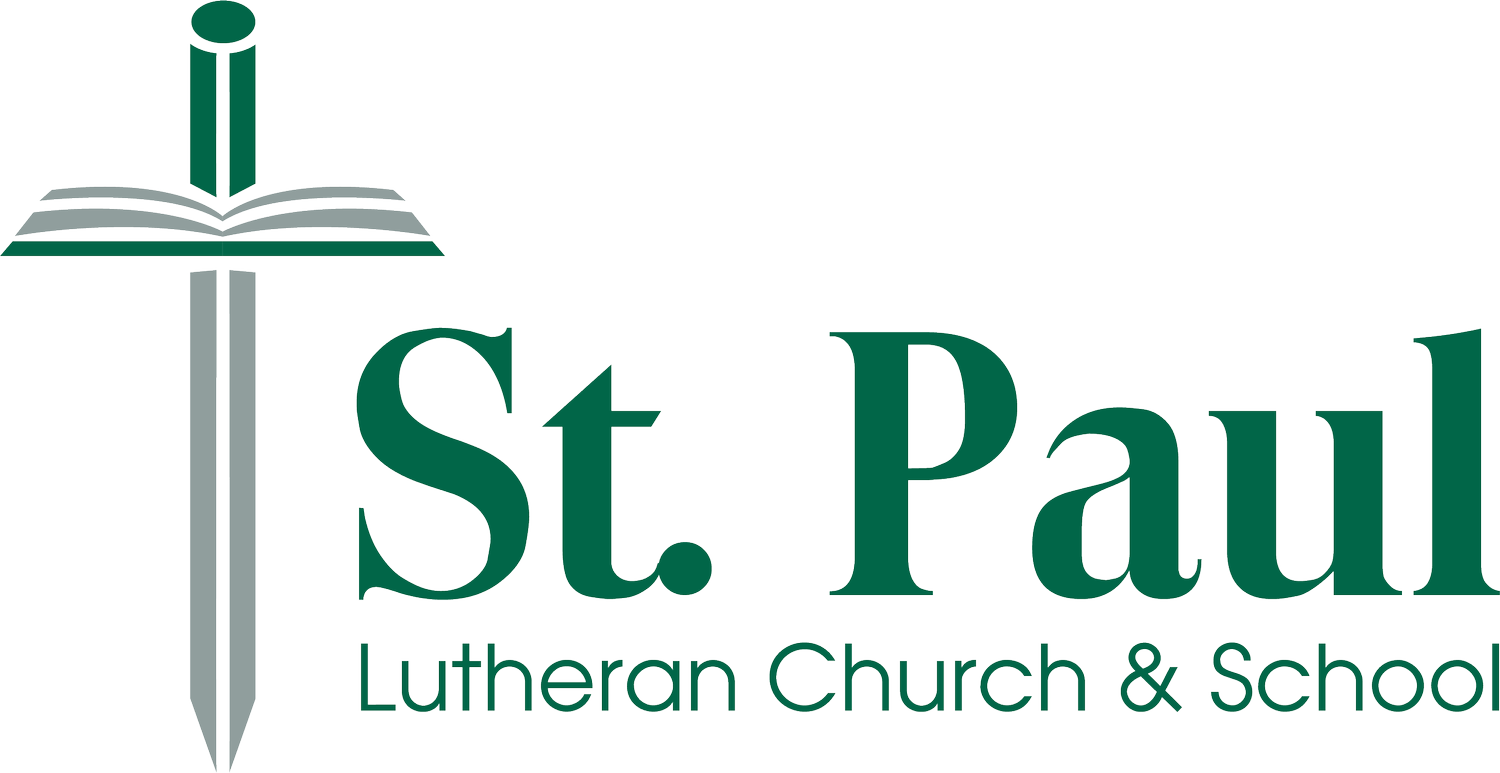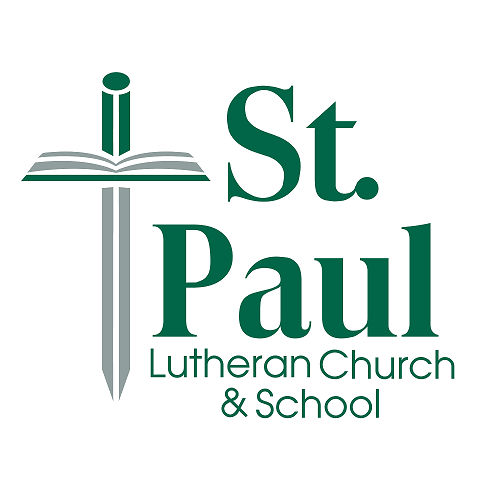Confirmation, Catechesis, and How We Carry Them Out
The content on this page is adapted from informational presentations given in May of 2024 to provide a brief history of the practice of confirmation and introduce the rationale and methodology of our confirmation program.
Introduction
Defining Our Terms
Confirmation: A traditional rite within Christianity that has served various purposes over time.
Catechesis: A word meaning “instruction”; in particular, instruction in the basic teachings of God’s Word.
Tradition in the Lutheran Church
Traditions can be helpful, and we hold onto them as gifts from Christians who have gone before us. The Lutheran Reformation valued our continuity with the historical church.
Traditions must also be edifying, based on God’s Word and used to build up believers.
If a tradition is not biblically sound, it needs to be modified accordingly or possibly eliminated altogether.
Confirmation—A Brief History
Some Quotes for Consideration
Especially to be rejected is confirmation, that deceitful mumbojumbo of the episcopal idols. It has no foundation in Scripture. The bishops are only deceiving people with their lies when they say that grace, a character, a mark are conferred in confirmation. (Luther’s Works, vol. 45, p. 8)
We essentially have a form upon which we largely agree, but a whole host of functions, depending on who you ask. Isn’t that a little backwards? Form should follow function, right? (Richard Krahn II, Confirmation: Form in Search of Function, p. 3)
Confirmation has a long history in the Christian and Lutheran church, and its history is not always savory. (Christian Worship: Foundations, p. 182)
Early Church Through the Reformation
Custom developed of bishops verifying that a baptism was validly performed. They would anoint the baptized and lay hands on them to confer a blessing.
Eventually this act gained the name “confirmation.” Since only a bishop could confirm a baptism, confirmation often happened much later.
During the Middle Ages, this confirmation was elevated to the place of a sacrament; confirmation completed Baptism and granted a special form of grace.
The time for confirmation was now distinctly separated from baptism and generally occurred when baptized children reached an age of discretion.
Confirmation After the Reformation
Luther and other reformers recognized that confirmation could serve as a rite in the church, but it was not a sacrament. Any idea that it “completed” Baptism was clearly against Scripture.
Instruction in God’s Word was emphasized, more than any particular rite.
Confirmation reenters the Lutheran church through Martin Bucer. This came in response to the Anabaptists, who deny that Baptism actually saves.
Whether intentionally or not, Bucer brought back the idea that confirmation completes Baptism, making someone a real Christian. Furthermore, Bucer placed confirmation between the sacraments. It was through confirmation that a Christian was admitted to the Lord’s Supper.
Beginning in the 17th century, two major movements had further influence on the understanding and practice of confirmation: pietism and rationalism.
Pietism emphasized a personal conversion experience; confirmation became, in essence, the time for those baptized as infants to become real Christian and commit themselves to Christ.
Rationalism saw faith as purely intellectual, and intentionally connected confirmation to the academic calendar. Many customs associated with confirmation today, such as confirming in eighth grade and a public examination, originated under this influence.
What is the Purpose of Confirmation?
Over the history of confirmation’s usage in the Lutheran church, there are six main views on the rite that can be identified. (These categories come from the book Confirmation in the Lutheran Church by Arthur Repp.)
Catechetical—Instruction for the Lord’s Supper.
Hierarchical—Confession of faith indicating surrender to Christ and submission to the church.
Sacramental—Implication that the Holy Spirit is given in laying on of hands and a stress that confirmation convers a new or fuller church membership.
Traditional—Public confession of faith by children who have been instructed, linked to Baptism and not the Lord’s Supper.
Pietistic— Renewal of the baptismal covenant with emphasis on conversion experience and regeneration.
Rationalistic—A coming of age celebration with emphasis on examination, ceremony, and sentimentalism.
Based on Scripture, if confirmation is to be kept as a rite, then the catechetical usage is most appropriate. This is reflected in the description of our current Confirmation Rite from Christian Worship: Agenda:
The rite is used when children who have been instructed desire to confess their faith publicly and affirm that they are prepared to receive the Sacrament of the Altar.
This view of confirmation emphasizes that the main thing is not the rite itself, but the instruction that precedes—and follows—the right. This leads us to consider how we carry out this catechesis.
Honing the Sword—A Family-Focused Approach to Pre-Confirmation Instruction
Who is Responsible for Catechesis?
2 Peter 3:17,18
Therefore, dear friends, since you already know these things, be on your guard so that you do not fall from your own firm position by being led astray through the error of the wicked. 18Instead grow in the grace and knowledge of our Lord and Savior Jesus Christ. To him be the glory, both now and forever. Amen.
Deuteronomy 6:6–9
These words that I am commanding you today are to be on your heart. Teach them diligently to your children, and speak about them when you sit in your house and when you walk on the road, when you lie down and when you get up. Tie them as a sign on your wrists, and they will serve as symbols on your forehead. Write them on the doorposts of your houses and on your gates.
Ephesians 6:4
Fathers, do not provoke your children to anger, but bring them up in the training and instruction of the Lord.
Ephesians 4:11,12
He himself gave the apostles, as well as the prophets, as well as the evangelists, as well as the pastors and teachers, for the purpose of training the saints for the work of serving, in order to build up the body of Christ.
Growth in God’s Word is an ongoing part of every Christian’s life. God has given Christian parents (and especially fathers as the head of the household) the privilege and responsibility of raising their children in God’s Word. He has also given his Church the gift of public ministers of the gospel, to train Christians for works of service.
Therefore, the question as we consider the instruction leading up to confirmation is not whether parents or pastors will do the instruction—both are called by God to do so. Rather, in Christian freedom, we consider what this joint instruction will look like.
There is nothing inherently wrong with the “traditional” model of a pastor teaching a “confirmation class,” whether that’s in a Lutheran Elementary School or an afterschool class. Such an approach can be edifying, especially when parents are also active in teaching the catechism at home and in bringing their children to corporate worship regularly.
But as we consider what this model has looked like over the last several decades, we can recognize drawbacks. One, in connection with other customs surrounding confirmation, is that it more easily leads to “Confirmation-Graduation Syndrome.” Another is that it can contribute to a learned helplessness among parents. Parents are inadvertently led to believe that, since they aren’t the pastor, they aren’t capable of teaching the catechism to their children. Then there is also the fact that not all parents are quite so regular in corporate worship and family devotions. A model that lets them just drop their kids off for instruction with little or no involvement on their part does them no favors in their own spiritual growth.
It is with these and other factors in mind that we have moved to a “family-focused” model for pre-confirmation instruction. Rather than entirely pastor-taught—or entirely parent-taught, for that matter—it aims to be a collaboration between pastors and parents.
How Honing the Sword Works
Each week, students are assigned a section from the Exposition of Luther’s Small Catechism. Parents are responsible for working through that section with their child.
Using materials provided by the pastors, parents have flexibility in how they do this. Parents are given answers to the questions in the catechism. There is a video for each section, highlighting the main points of the chapter. This video might be used by the parents alone, by the student alone, or by both together. Parent and child might read through the lesson and work together to answer the questions, or the student could work through the lesson on their own and the parent can check their work.
After working through the lesson, the students submit answers through an online form. This allows the pastors to evaluate their understanding and offer feedback.
Once a month, everyone in the program gets together for a Family Forge. We open with devotion, and then split up. Parents preview the upcoming lessons in a format similar to other group Bible studies. The students review the previous set of lessons, focusing on discussion and application questions.
During the week, there is also memory work of both Bible passages and Catechism parts. Learning by heart is another way to help solidify our understanding of these Bible truths.
Honing the Sword is a two-year program. After completing both years, students have an examination interview with a pastor as they prepare to go through the Rite of Confirmation. The program is designed for children to be confirmed between the ages of 12 and 14.
Our Goals and Prayer
In adopting this method for pre-confirmation instruction, our goal is to better encourage lifelong growth in God’s Word. We hope to instill habits of personal Bible study in both the students and their parents, as well as foster more opportunities for parents and their children to learn and discuss God’s Word together. God alone knows how we will bless this method, and we will likely not see the effects clearly until several years, or even generations, down the road. But it is our prayer that this program will be a blessing, trusting God’s promise to always bless us whenever we hear and read his Word.
For Further Reading
A selection of helpful resources on the history of confirmation and its role in the Lutheran church can be found at the links below.

